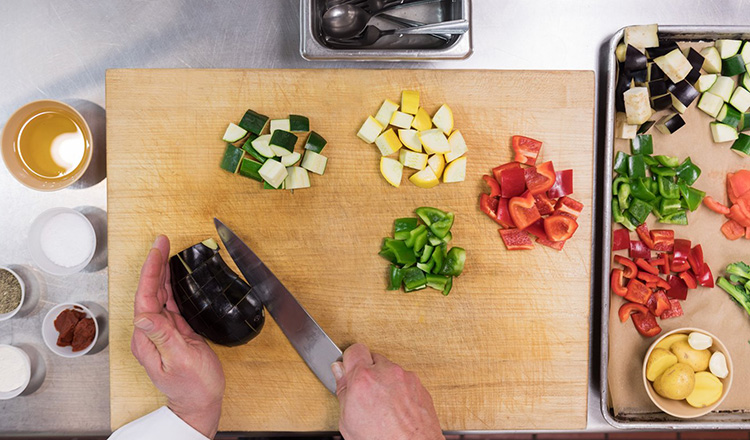
Though we love a good dinner freestyle, there is nothing more fun than exploring a new cookbook or diving into a recipe for a dish we've never tried. A well-written recipe should be easy to follow, but there are a few things to keep in mind that can help ensure success every time.
- Read the recipe all the way through before you start. This will help you to know what ingredients you can combine while you prep. If the onions, carrots, and celery go in a pot all at once, they can live in the same bowl. Less dishes! You'll also find what you might need to Google before you get started.
- Commas matter! If an ingredient list calls for “1/2 cup almonds, chopped,” it wants you to measure the almonds, then chop them. If it calls for “1/2 cup chopped almonds,” it wants you to chop the almonds, then measure them. That might seem like a nit-picky distinction, but it can make a big difference in the outcome of a recipe (plus it will impact nutrition information, if you’re counting).
- Make sure you assemble all of your ingredients, take care of any prep before you turn on the stove, and find any tools or equipment so they are ready to roll when you are. Having to wait even an extra few minutes to find that strainer or dig out those spices can be the difference between perfect and overdone.
- Focus more on “doneness indicators” than on time. Lots of recipes—especially ours—will offer a rough estimate of time for guidance plus an identifying feature, whether it is color, texture, or maybe even a fragrance. All of our stoves and ovens work a little bit differently, so what takes 8 minutes in our kitchen could take 12 in yours. As we teach our students: it’s done when it’s done, not when the timer goes off.
Once you've shaken off the new-to-this jitters, you might find yourself feeling a little extra confident as you face a new recipe. Here are our best tips for advanced recipe readers:
- Don’t be afraid to change something up if it doesn’t make sense to you. You’re a smart cookie, and if you think there is a better way, try it! Maybe it won’t be perfect, but then you know for next time. If it is, you’ve just saved your future self a lot of needless work. For example, you’re making a salsa in a food processor and the recipe calls for “1 onion, minced.” You don’t have to mince that onion just to put it in the food processor. As CIA chef-instructors tell their students every day: work smart, not hard.
- No one will know if you skip the garnish. If you’re throwing a dinner party, maybe frying those sage leaves to top your butternut squash lasagna is a nice touch, but for a simple weeknight meal, don’t be afraid to skip those steps. If a recipe calls for you to “reserve 1/2 cup for garnish,” and then adds fifteen minutes to prepare said garnish, it may not be worth it after a 12-hour workday—and that’s okay!
- When it comes to herbs, if it doesn’t specify “dry,” a recipe is usually calling for fresh. If you aren’t sure, smaller quantities like 1 teaspoon or less are probably dry, and larger measurements like 1 tablespoon or more are probably fresh. Another clue is when they are added; dry herbs will go in sooner than fresh, which are often added at the end.
- Most savory recipes (meaning, not baking) can be halved or doubled without too much trouble, so make what you need. Consider how a different quantity of ingredients may impact cooking time or equipment. A smaller or larger cut of meat will take less or more time, depending on its size, and a smaller batch of stew should cook in a smaller pot. Don’t be afraid to make a full batch and freeze half for later. Most cooked dishes will hold up (and if it’s not perfect, it’s still dinner).
